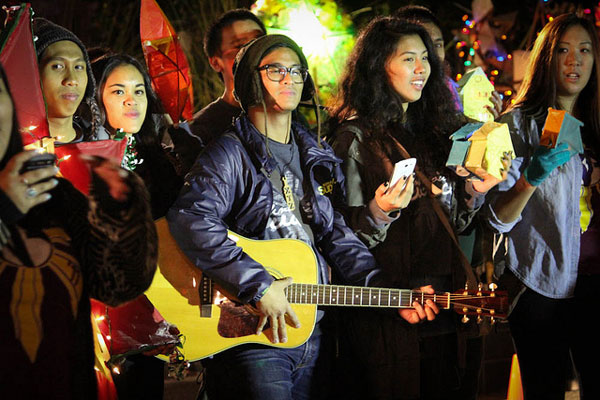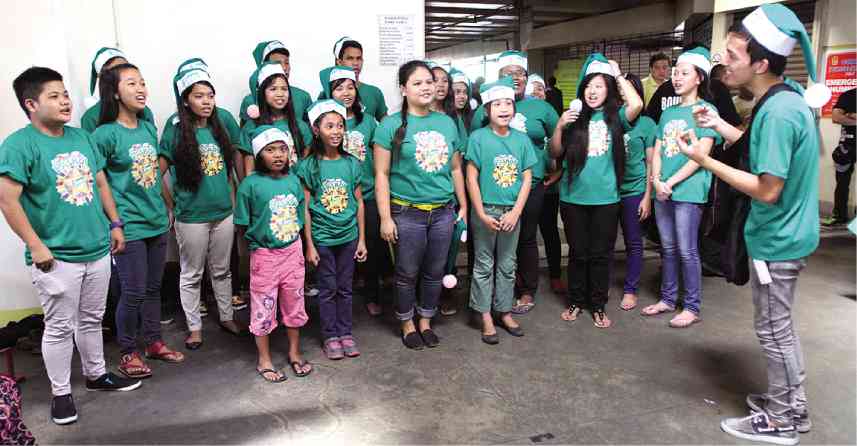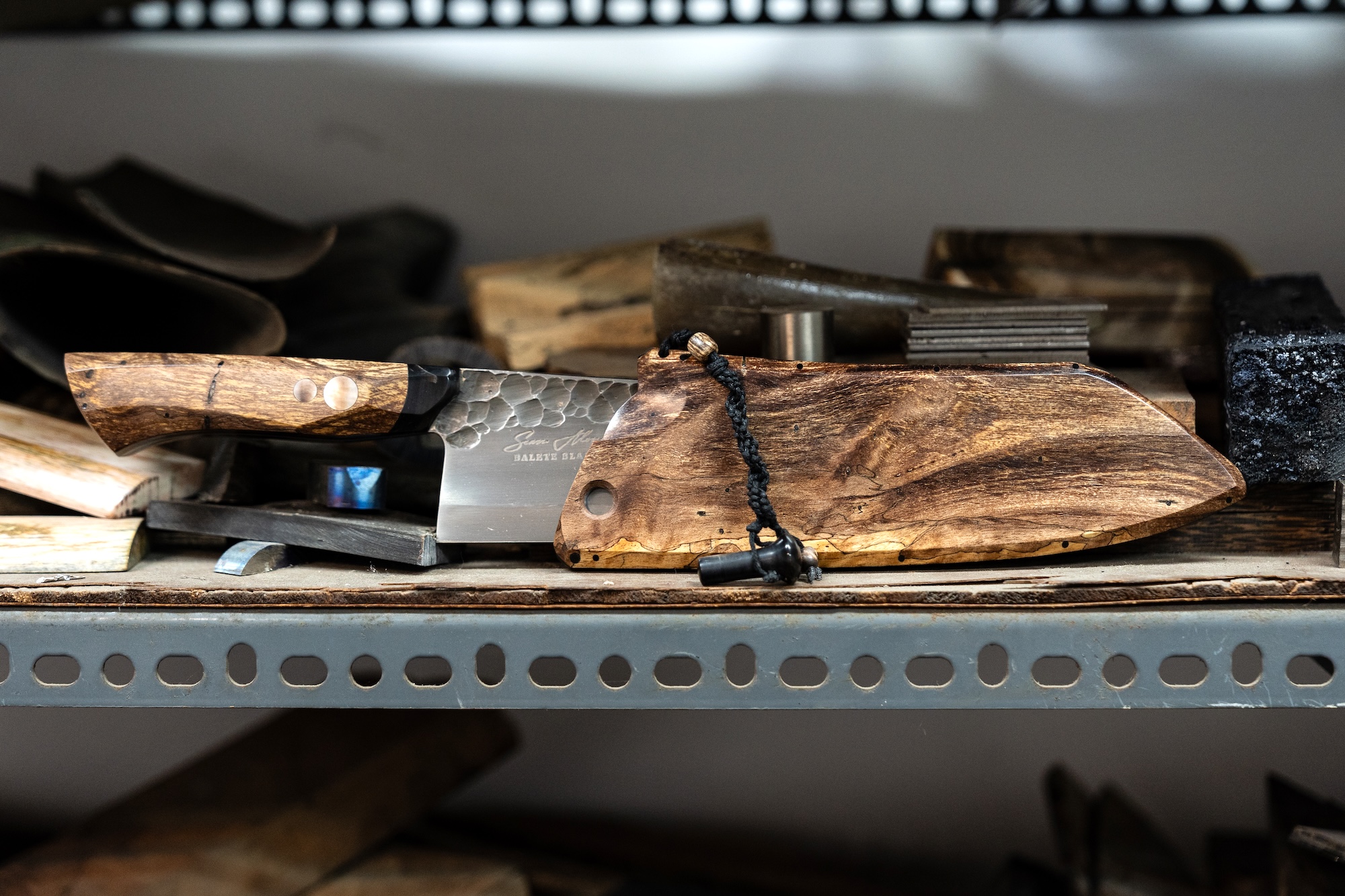The month-long celebration of Christmas in the Philippines is highlighted by the singing of carols, hymns, and folk tunes, especially after misa de gallo or the midnight mass. Caroling began as the group singing of villancicos in Spain, and as a Spanish colony for 333 years, the Philippines eventually took it on as its own tradition. Carolers may be neighborhood kids singing at the gate or doorstep of a house, or professional groups “contracted” or hired to sing in private residences or in public places.
As far as any Filipino generation could remember, caroling was simplified by going house to house without prior notice where belting kids would be given coins and bills by the homeowners. “When I was in the University of the Philippines (UP) in the early ’80s, our choir would go caroling at chosen residences, [mostly of the affluent,] though letters would be properly sent to them beforehand,” says mezzo-soprano Maricris Joaquin. They would be given either cash or a check, and it was common for the homeowners to prepare dinner or snacks.

“When I conducted the Ateneo de Manila University Glee Club, we would write letters to prominent alumni for permission to carol in their homes. We would prepare 15 to 20 minutes of standard repertoire: Hark the Herald, How the Bells Ring, Deck the Halls. We also sang Filipino Christmas songs like Pasko Na Naman, Diwa ng Pasko, then end with Simbang Gabi. We’d bring our minus ones, at first, analog and then, digital,” says international composer and conductor Joel Navarro. The choir raked in a lot of money—up to the hundreds of thousands.
But caroling has evolved, from its quick-cash rackets by street kids to benevolent acts of good will.
And in a span of 30 years, caroling has taken many forms—no longer the usual visits by small ensembles to houses, or busking along street corners in snowy weather, which is still being done in the USA. Now, it can be serious business.
In the Philippines, caroling is imagined as kids with their tansan tambourines and the carols abbreviated whenever they get shooed away; street urchins who keep returning if you give them some treats.
Caroling as good business
According to composer and conductor Benjamin Filippone, there are professional groups and there are larger volunteer groups with paid professionals. Some church choirs have paid singers, too. “There’s also what is called a flash mob where a group goes to a crowded place like a department store or a train station and starts singing among everyone as a surprise. It’s often spontaneous, unless it’s a choir that organizes caroling events,” he notes.
Even if you are paying, do expect the choir to stick to a repertoire. “I usually insist on a three-part program where Christmas carols are featured in the end. The first part consists of more familiar pieces; the second part, a more experimental repertoire; then I close with an almost participatory repertoire, ‘yung puwedeng sabayan,” says Roldan.
Caroling as good will

But caroling has evolved, from its quick-cash rackets by street kids to benevolent acts of good will. “I remember going to a government hospital for children in Manila with some friends to sing. It was organized by the late stage and film director Behn Cervantes. In that case, we did not ask for money. Instead, we shared our songs with the sick and lonely,” says Joaquin, “Sometimes the carolers would prepare a script, like what the officers of the UP College of Music Alumni Association did in 2010. The script was about Christ’s nativity and had a narrative and songs.” Despite having gone through century after century, caroling in the Philippines has not faded and continues to grow—from neighborhood kids looking to make a quick buck to pros who can actually demand a price.
Header image courtesy of Zymon Bacongallo
This story originally appeared in Northern Living, Dec. 2017
Read more:
Etiquette for Christmas card writing
The economics of cash gifts for Christmas
Here’s an eco-friendly way to wrap your gifts this Christmas













































